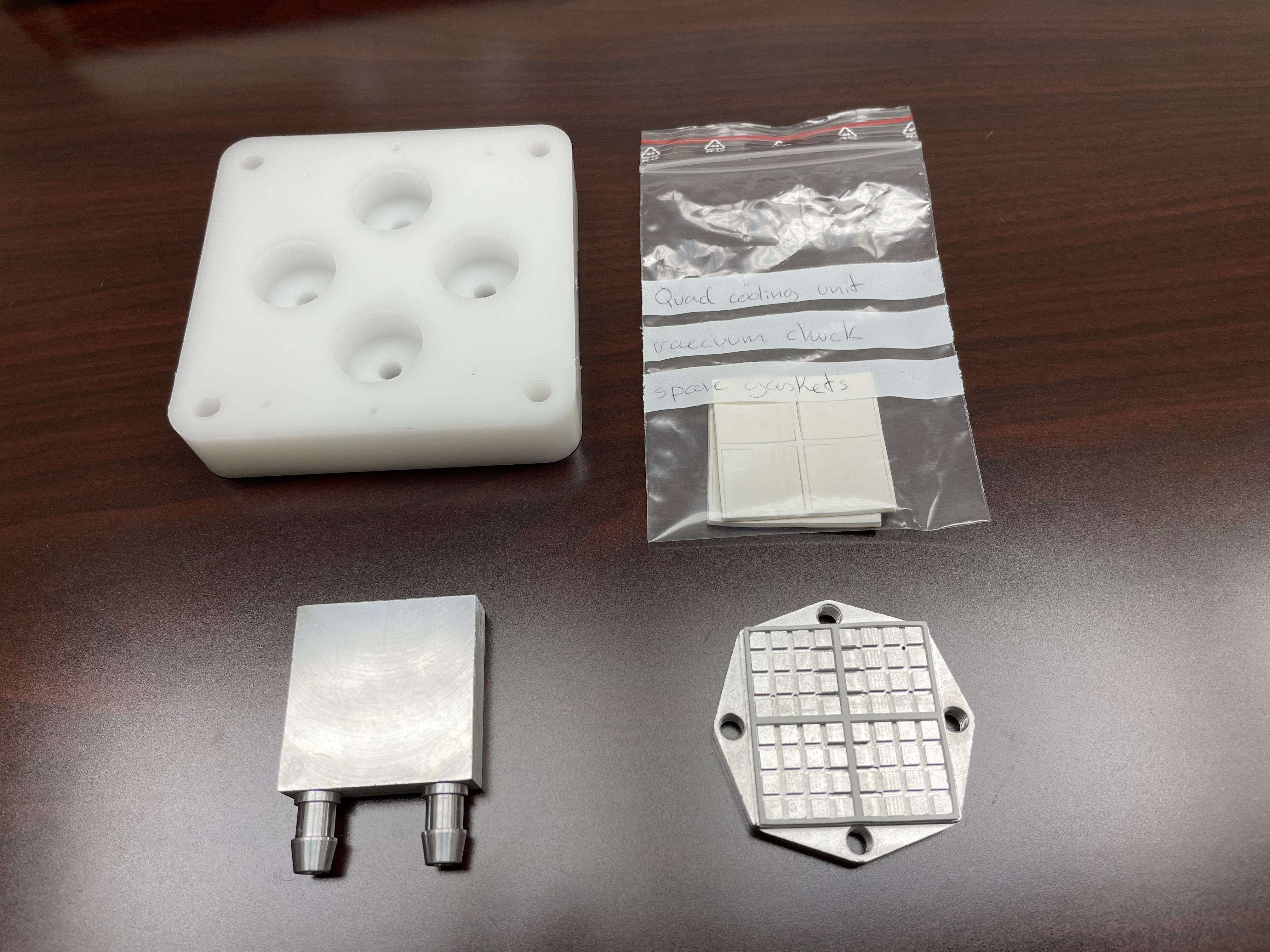The ITk pixel module cooling Twiki page is the main source for the common information. This page captures the local module cooling setup information at the SLAC Integration site. A talk by Magne Lauritzen (Jul/7/2020) has some updated status and additional pictures.
Component Collection Status
Shipment from Bergen (received)
|
|---|
Shipment from CERN (????)
- Foam insulation parts
- 25m coolant tubes
- 5m dry air / vacuum tubes
- 4 RENY screws
- 20 disc springs
- Various washers and nylon screws
Items to be acquired by INT site
- Peltier devices (see the summary of this presentation for recommendations)
- Panasonic EYGS0909ZLX2 TIM sheets (50cm2 per cooling unit)
- Temperature sensors (NTC or PT100s, see assembly manual)
Operation Instructions
E-mail from Magne Lautitzen to atlas-itk-pixel-modules-TestSystem (Oct/26/2020):
To operate the cooling unit, you will need the following infrastructure:
- Vacuum source
- Dry air or nitrogen source
- Circulating chiller
- Peltier power supply and/or controller
The amount of dry air or nitrogen needed to maintain a dry atmosphere in the cooling unit will depend on the humidity in your lab and the lowest temperature you want to reach on the module. A ballpark figure is 1.5L/min at -25C.
The circulating chiller must have a cooling capacity that depends on how cold you need to take the modules. See page 13 on this presentation for recommendations for reaching -55C.
For stable temperature control of the modules, you will need a peltier controller. I have been successfully using the Meerstetter 1089.
To avoid condensation on the peltier devices, you must maintain a dry atmosphere in the cooling unit whenever there is coolant flowing through the coldplate. If condensation forms on the peltier devices, it will degrade the performance of the cooling unit because ice and water is an excellent conductor of heat. Getting rid of this condensation requires a long term “bakeout” of the coldstack and is best avoided.
